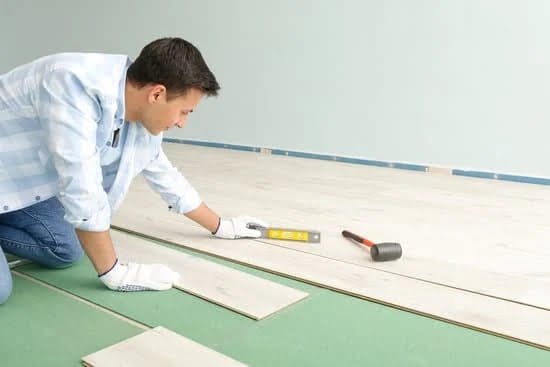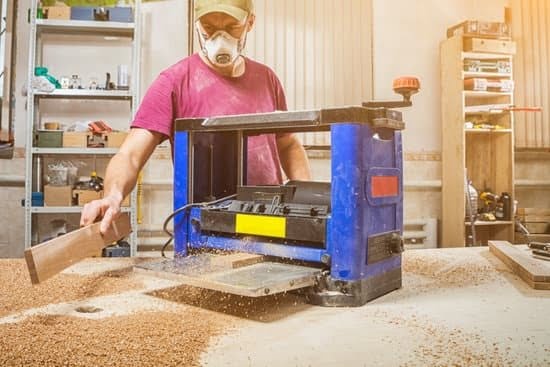Introduction
Woodworking is an enjoyable and creative hobby that can be done at home. From making furniture to small decorative projects, there are many activities available for individuals of all skill levels. You can construct intricate jewelry boxes, large bookshelves and even elaborate wooden sculptures. Woodworking requires tools that allow you to shape, cut, and sand pieces of wood as well as components such as glue and nails if needed. Let’s take a look at some essential woodworking tools for working at home.
A saw is the first tool that comes to mind when thinking about woodworking. There are many different types of saws including circular saws, miter saws, jigsaws and band saws that are used for different applications such as cutting large chunks of lumber into smaller pieces or making curved cuts in thin boards for detailed designs.
To shape the wood after it is cut you will need some type of handheld wood carving tool such as chisel or gouge. Chisels come with special blades that allow you to create grooves and different shapes in the wooden material while a gouge is used to hollow out parts of the piece you are working on, such as on furniture legs or handles.
Finally, a sander helps provide a smoother finish on projects. It uses oscillating discs or belts to sand away any rough patches left behind by hand tools or sawing operations so that the final product looks professional and well-crafted. Commonly used sanders include Random Orbital Sanders (ROS), Palm Sanders, Sheet Sanders, Belt Sanders and Corner & Edge Sanders. All of these tools come in various sizes suitable for both large and small projects alike so make sure you choose one that fits your needs best!
The Basics
1. Hand Saw – A hand saw is a hands-on tool used to make straight cuts in wood. It consists of a metal blade with fine serrations, or teeth, along the edge. To cut with a hand saw, you move the blade back and forth through the material until the desired depth of cut is reached. Image: https://tinyurl.com/y9qpctb3
2. Hammer – A hammer is an essential tool used to drive nails into wood or other materials during construction projects. It features a flat-tipped head and long handle for easy use and control. Image: https://tinyurl.com/ycskdf72
3. Chisel – A chisel is used to shape and size objects from pieces of wood or other hard materials such as stone and metalwork. The cutting edge of the chisel is sharpened for easy penetration into the material being worked on, while its edges are also sharpened in order to create clean cuts or grooves in wood surfaces without tearing or splitting them apart. The handle provides grip and control as well as leverage when using the instrument on harder surfaces like metal or stone work. Image: https://tinyurl.com/yatwc68m
4. Clamps – Clamps are tools designed to hold two pieces of material together while they are being worked on or otherwise manipulated. Clamps are most often used in woodworking applications but can also be employed in metalworking, plumbing, piping, etc.. They come in many different shapes and sizes “from small spring clamps to larger band clamps”and can range from single-purpose models intended for specific tasks, to pairs that can be adjusted for various widths and thicknesses of material being held together .Image: https://tinyurl.com/y8z6asyo
5. Workbench – Workbenches provide tabletop workspace for projects ranging from simple DIY repairs to complicated carpentry endeavors, such as household furniture building frames (e..g., dining room tables). Woodworkers rely on benches for their consistent evenness which allow them to accurately measure angles and lay out their work pieces before making any cuts or joining them together with nails and screws; this makes complex projects much easier than they would be without one! Image: https://tinyurl.com/ybdtymhf
Video: https://www.youtube.com/watch?v=aY852vKjNkQ
Power Tools
Power Tool | Benefits | Cost
Random Orbit Sander | Smooths surfaces quickly and evenly, less chances of kickback than other types of sanders, easy to use | $50-$100
Circular Saw | Can easily make angled and straight cuts, has powerful saw blade motor | $50-$500
Router | Ideal for cutting decorative edges to create crown molding and finish work; can create beveled cuts, straight cuts and cut complex shapes with a wide range of bits & templates | $80-$300
Jigsaw | Excellent for cutting curves; more control than a circular saw; can cut complex shapes with wide variety of blades | $40-$200
Drill / Impact Driver | Versatile power tools that come in cordless models; ideal for creating holes and driving screws using various drill bits and drivers.| $60-$200
Safety
Safety is the most important factor when woodworking at home. It’s very important to protect yourself by wearing the proper personal protective equipment (PPE) such as safety glasses, gloves, respiratory masks and hearing protection when working with different tools. You should also take extra measures to avoid cuts, bruises and eye injuries. Additionally, always dispose of materials safely; remember to clean up any sawdust or scraps created while cutting in a safe manner.
Beginner Woodworking Projects
Beginner woodworking projects can be extremely rewarding and creative outcomes. With the right tools, you can make items such as chairs, tables, cabinets and box frames that are strong, beautiful and one of a kind. While some of these projects can be completed with just basic tools, others may require more advanced equipment for precise results. A few essential tools that are beneficial at home include saws (hand saw, table saw or miter saw), chisels for creating curves and finish details, routers to add unique accents and profiles, wrenches or ratchets for clamping down boards securely, a drill press and drill bit set for consistent holes and fasteners. Depending on the project size and complexity there are many other tools that may come in handy such as biscuit cutters, biscuit joiners, routers and jigsaws. With the right equipment you can construct amazing pieces that function well while showcasing your workmanship.
Recommended Brands/Tools
When it comes to woodworking at home, there are a variety of tools that you should consider having in your armory. The most essential tools for general woodworking include saws, drills, power sanders, clamps, planers and chisels. Depending on the complexity of your project you may also need levels, routers, jointers and specialized jigs.
For saws the ideal choice is a combination saw which offers a range of different blades and handles that can be interchanged depending on the task at hand. Popular brands such as DeWalt, Makita, Festool and Ryobi offer quality combination saws that generally receive positive reviews from both professionals and DIY enthusiasts alike.
When shopping for drills look for features such as hammer functions for drilling through masonry applications plus an LED light for working in dark areas. A cordless drill with an adjustable torque setting will come in handy for various projects around the house. Look for brands like Milwaukee, Bosch and Craftsman which are highly rated amongst other users.
Power sanders are great time savers when it comes to leveling larger surfaces quickly and easily. Orbital sanders tend to provide smoother results than belt sanders if you don’t need to strip large amounts of material off a surface. Brands worth considering include Dewalt Random Orbit Sander or Ridgid Detail Palm Sander which offer great value combined with good levels of performance.
In addition to the core woodworking tools mentioned above you may need other accessories such as sets of high quality chisels and gouges made from hardened steel; specialized jigs like doweling jigs or biscuit joiners; laser levels with adjustable points; routers with varying levels of power; jointers with self-aligning tables; advanced dust collection systems; reciprocating saws in order to cut through thicker pieces of lumber etc depending upon your skill level and projects that you undertake at home.
Advanced Woodworking Projects
Tools needed for advanced woodworking projects can include power drills, circular and compound saws, specialty drill bits, routers, clamps, sanders, jigsaws, chisels and planes. Additional tools might also include band saws or joiners for cutting wood parts to precise dimensions and shapes. In addition to these tools, having a good workbench and proper lighting is essential for successful woodworking.
In order to master more challenging woodworking projects, it is important to have knowledge of the materials used in the project as well as be comfortable with the various tools used. In particular understanding the mechanics of different types of joints and understanding how they are assembled is key when creating complex projects. Furthermore understanding grain patterns of different types of woods and how they respond to pressure is useful in achieving precise results. Other techniques such as carving with chisels allows skilled craftsmen to produce intricate designs that add a unique touch specific pieces. Lastly being able to use commercial or custom finishes can add a polished look or protective layer depending on the desired outcome.
Conclusion
Before starting a woodworking project at home, it is important to have the right tools. Those who are new to the world of woodworking should research the types of tools they will need, such as saws, clamps, and safety equipment. Once appropriate tools have been identified and acquired, it is important to be familiar with how to use them properly for any given project. It is also important to not skimp on quality when selecting tools in order to ensure that the project goes off without a hitch. Furthermore, don’t forget about buying additional supplies such as sandpaper and sealants.
It is always advised that individuals considering taking up woodworking educate themselves with regards to proper measurement and overall craftsmanship before beginning their projects. A vast range of helpful resources exist ranging from physical classes to books and websites for further guidance on DIY methods for carpentry or specific tricks of the trade. Although many people enjoy a challenge like tackling a skill like woodworking some tasks can be difficult even for experienced craftsmen due to having tools that might not fulfill the job’s specifications or lack adequate knowledge accordingly. Thus we encourage readers to seek out informative resources such as classes and professional guidance if possible before setting off on any big woodworking journey at home.

Hi everyone! I’m a woodworker and blogger, and this is my woodworking blog. In my blog, I share tips and tricks for woodworkers of all skill levels, as well as project ideas that you can try yourself.





